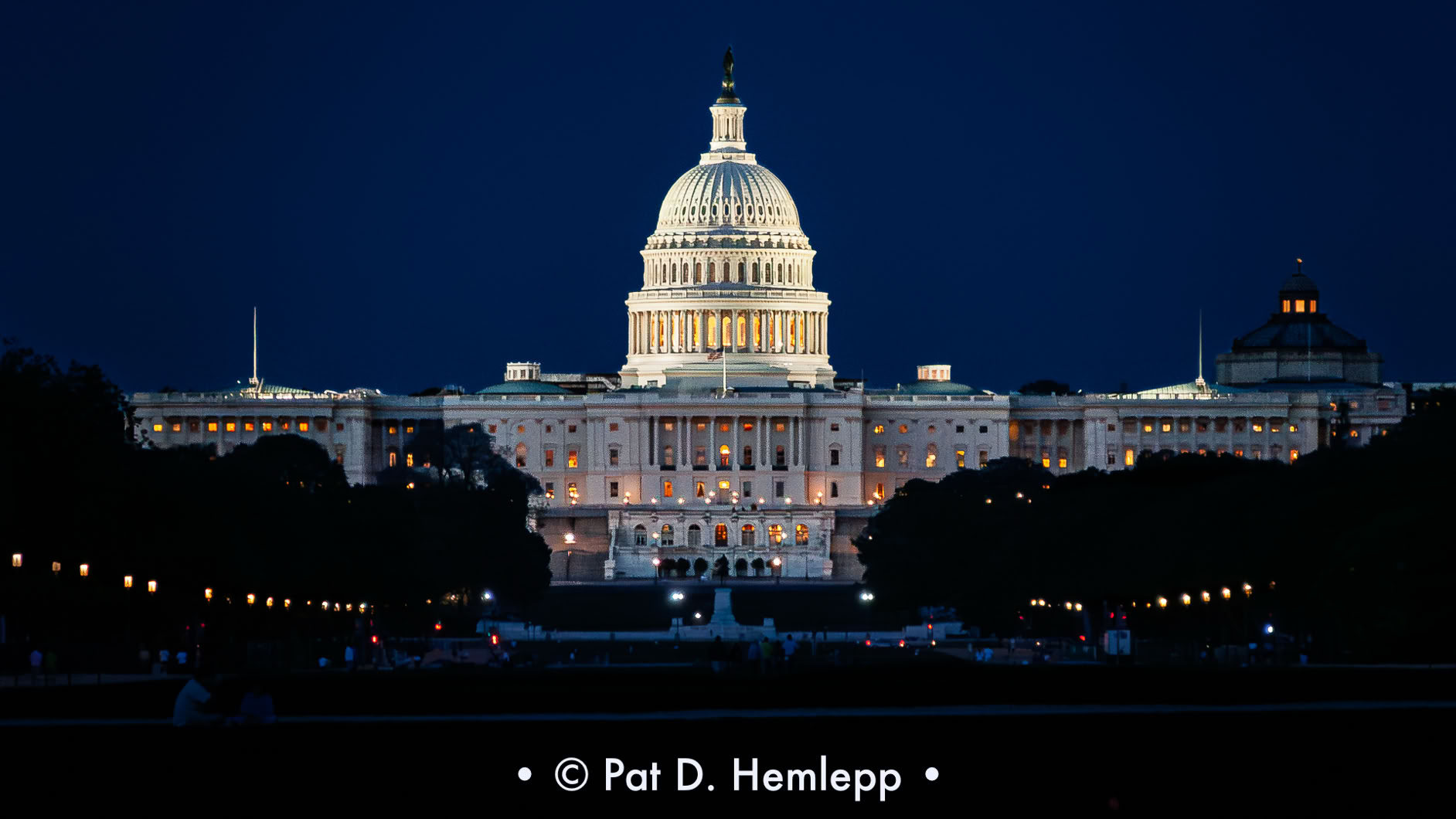-
Menu

The U.S. Capitol Building at night as seen from The National Mall, Washington, D.C.
I enjoy night photography, especially of architecture or city scenes. The detail and contrast shown in buildings illuminated against the night sky can create incredible photos, especially if the photos are taken during the “blue hour” shortly after sunset when the sky shifts to a deep blue before transitioning to the nighttime black.
What I don’t like is hauling extra equipment on a trip in hopes of getting a nice blue-hour photograph. Night photography typically requires slow shutter speeds to get a properly exposed photo. Slow shutter speeds lead to blurry images caused by camera movements or vibrations while the shutter is open. Mounting a camera on a sturdy tripod and using a remote shutter release eliminates the movements or vibrations.
But I seldom travel with a tripod. It’s extra weight for plane travel and it’s a pain to carry all day just in case it might be needed.
This blue-hour photograph of the United States Capitol Building in Washington, D.C. required a slow shutter speed (one-fortieth of a second), but it was taken without a tripod and shows no camera shake.
Some photographers can shoot at one-fortieth of a second handheld without a problem. I’m not one of those photographers.
To get this shot, I stood in the middle of the National Mall and turned myself into a “human tripod” using a wide stance for balance, pulling my elbows tight to my sides for stability and holding my breath when I shot to try to eliminate all camera movement. Then I followed the “blind squirrel” or “strength in numbers” theory of photography and clicked off a few dozen frames in hopes that one would be sharp.
This was the one. It’s an image that combined photographic skills with a sizable amount of luck.
The U. S. Capitol is an excellent subject for photography. I have several dozen very nice photos of the building taken from different angles at different times of day and in different seasons. But I avoided photos of the Capitol between early 2014 and early 2017 when the dome was surrounded by scaffolding. It hindered photography, but the scaffolding was part of a necessary — and long overdue — refurbishing of the Capitol dome and rotunda.
The $60 million project was the first restoration of the dome since 1960. The dome was built more than 150 years ago, using 9 million pounds of cast iron. Over the years, Washington weather and other factors caused more than 1,000 cracks in the cast iron, creating leaks that threatened the artwork in the Capitol rotunda and weakening the dome infrastructure to the point where falling objects could endanger visitors in the rotunda.
Restoration work began in 2014 and was completed before the inauguration in January 2017.
If I had been a documentary photographer, photos of the Capitol during the refurbishing would have been important additions to my collection. But I prefer more traditional, timeless shots for my travel photography. A photo of the Capitol with scaffolding would date the scene to sometime in 2014, 2015 or 2016.
It’s odd, though, that a number of TV shows used scenes with the Capitol dome in the background surrounded by scaffolding. When the shows first aired in 2014, 2015 or 2016, those scenes may have felt timely. But it definitely dates the program when seen in reruns today.
Tech specs